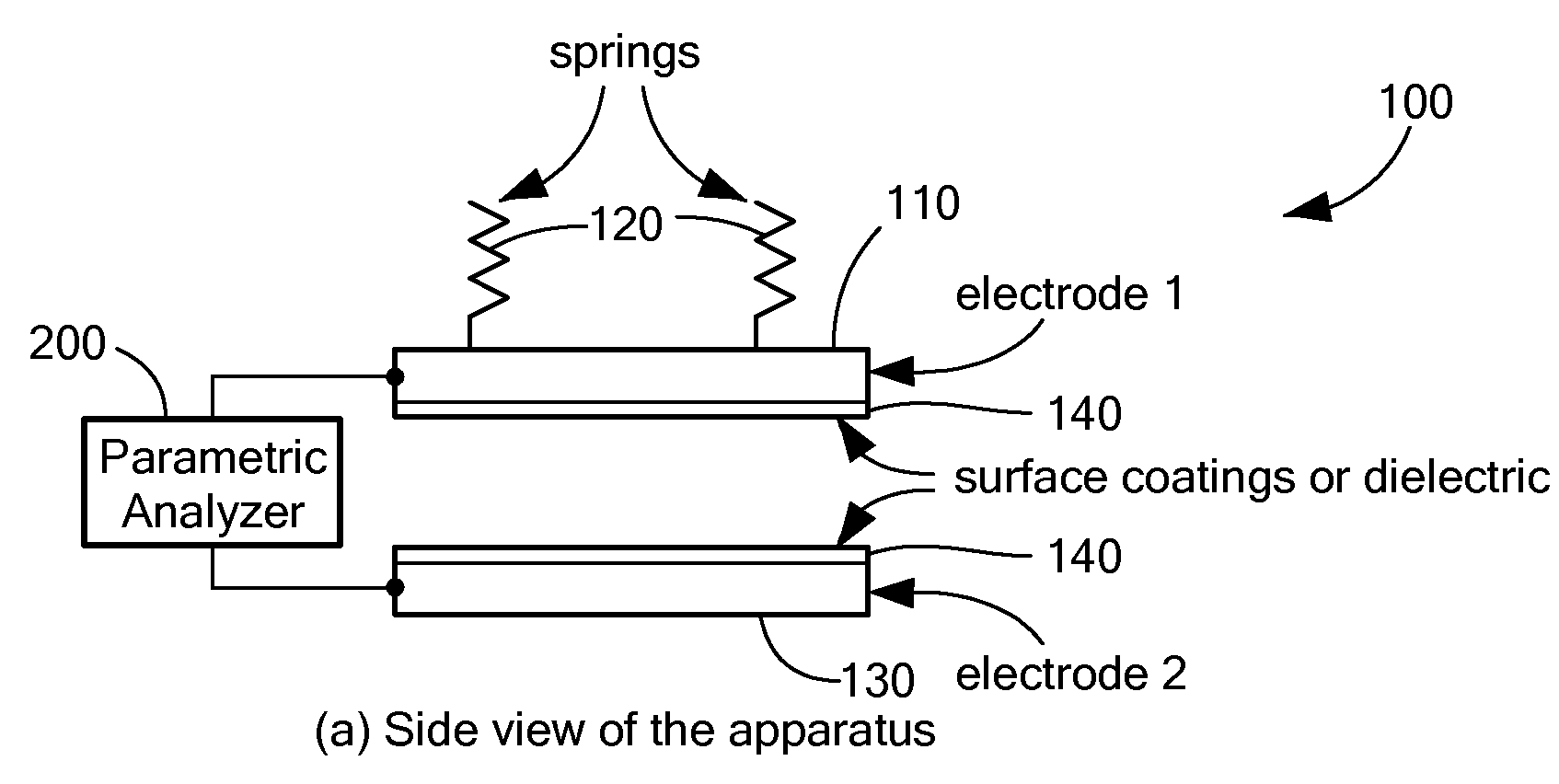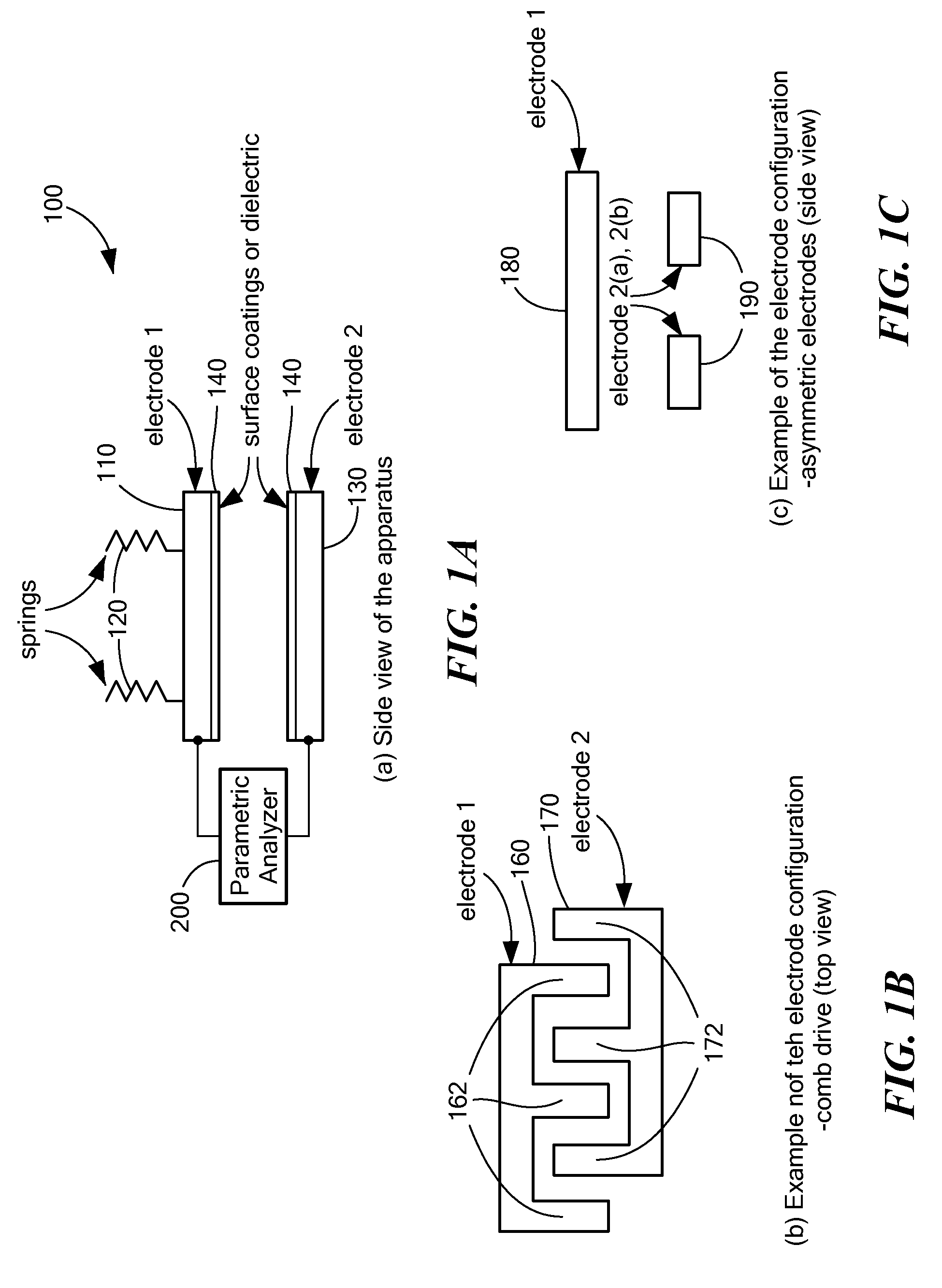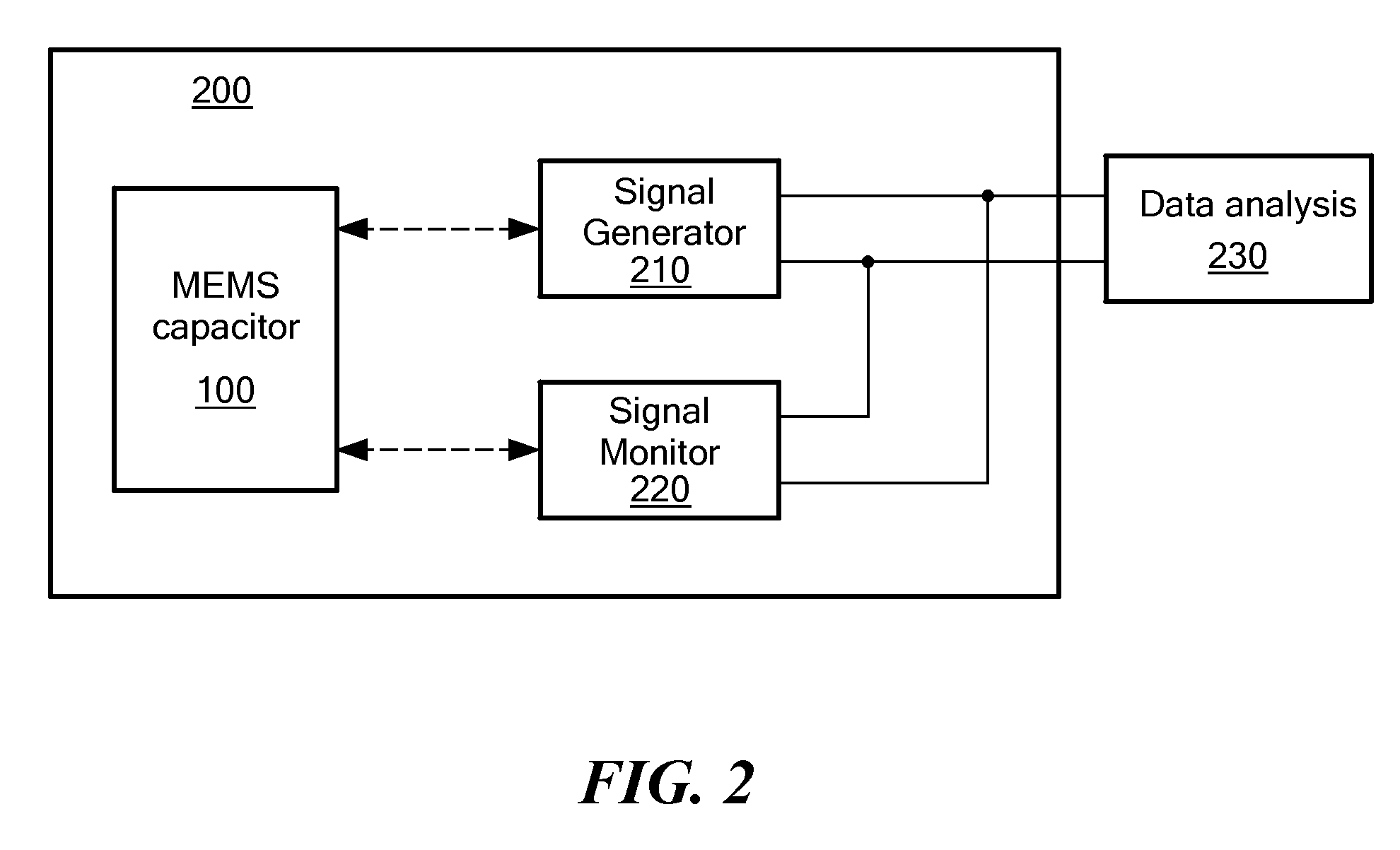System and Method for Detecting Surface Charges of a MEMS Device
- Summary
- Abstract
- Description
- Claims
- Application Information
AI Technical Summary
Benefits of technology
Problems solved by technology
Method used
Image
Examples
Embodiment Construction
[0005]A first embodiment of the invention involves a method for measuring a retained surface charge within a MEMS device. The MEMS device may include a first and second electrode (e.g., separated by an air gap). The method may first perform an initial signal sweep on the MEMS device by applying a first force signal to the MEMS device and gradually changing the applied first force signal. By changing the first force signal, the method may change a gap between the first and second electrode which, in turn, causes a capacitance change.
[0006]After performing the initial signal sweep, the method may (1) apply a stress signal to the MEMS device for a pre-determined amount of time, and (2) perform at least one additional signal sweep on the MEMS device. The stress signal may cause the first and / or second electrode to retain a surface charge. To perform the additional signal sweep(s), the method may apply a second force signal to the MEMS device and gradually change the applied second force...
PUM
 Login to View More
Login to View More Abstract
Description
Claims
Application Information
 Login to View More
Login to View More - R&D
- Intellectual Property
- Life Sciences
- Materials
- Tech Scout
- Unparalleled Data Quality
- Higher Quality Content
- 60% Fewer Hallucinations
Browse by: Latest US Patents, China's latest patents, Technical Efficacy Thesaurus, Application Domain, Technology Topic, Popular Technical Reports.
© 2025 PatSnap. All rights reserved.Legal|Privacy policy|Modern Slavery Act Transparency Statement|Sitemap|About US| Contact US: help@patsnap.com



